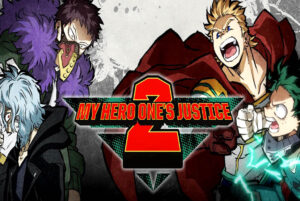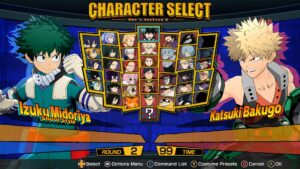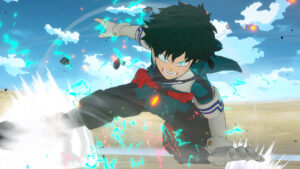
Anime fighters are a dime a dozen nowadays, but not many often receive straight-up sequels.
“My Hero One’s Justice 2” was released March 13 for PS4, Xbox One, Nintendo Switch and PC.
This 3D arena fighter is based off the popular anime series “My Hero Academia,” set in a world populated by people born with super-powered abilities, known as quirks.
The show follows high school student Izuku Midoriya as he trains to become a professional hero, a licensed superhero who is paid to capture villains, after inheriting his quirk from the top ranked hero, All Might.
The game is a sequel to 2018’s “My Hero One’s Justice,” picking up where the original game left off at the end of the second season, following the story of the anime’s third and fourth seasons.
“My Hero One’s Justice 2” shares many traits with its predecessor but has a largely expanded roster that nearly doubles the previous game’s, with 40 playable characters.
The gameplay consists entirely of arena-based combat with two characters fighting against one another in a 3D space.
The combat has kept the same base format with basic combo attacks, quirk attacks and special attacks all being designated to their own separate buttons. Hitting a button at the correct time while moving the joystick can launch a counterattack or an unblockable attack.
This beats normal attacks and shatters an opponent’s guard.
Several additions have been added to refine the gameplay such as the ability to dodge while holding guard and move canceling that allows players to back out of a risky attack resulting from an ill-timed move, with both moves delegated to the shoulder buttons of a controller.
However, these additions penalize the player for such actions as move canceling will use up part of your “Plus Ultra” gauge, the game’s version of a Special Meter or Super Meter that builds up to use super moves.

The Plus Ultra gauge builds up over time based on how many attacks a player lands and how much damage they have taken, with the player able to stack up to three portions of the meter that can be used on Level One or Level Two supers, burning up one portion or two portions respectively.
Unfortunately, the default move cancel button is the same as the button that allows players to dash across the screen.
Because of this, in the madness of an up close encounter, a mistimed button press to dash away could result in a move cancel and burn up a portion of the Plus Ultra gauge that makes all the difference between a Level One or Level Two super move.
Another issue with the button assignments comes from sidekick attacks.
Two sidekicks can be assigned per match and be called in as strikers to help the player in a pinch with a quick attack. In order to try and spice up these basic strikers, a new feature has been added to the sidekicks that allowed a Plus Ultra bar to be used up for the striker to use their Level One super.
This is a great concept in theory, but in execution since the action requires quick consecutive presses of the striker button, the time can be very finicky and hard to activate as a result.
Another neat addition to sidekicks is the concept of teams.
If three characters are placed as the hero and sidekicks together that are featured to work together in the anime, this group has a special battle introduction and a different super move that sees all three characters working together.
But again, while the feature is interesting, it is very limited as there are only a total of five team pairings in the game.
The story mode also returns, but keeps the same dull format that the previous game did, recapping the events of the seasons through voiced motion comics that use still images from the anime before the player is thrown into a match based on the two characters in that scene.
This is certainly a shame as there are certain sections at the very end that have fully animated 3D cinematics that look absolutely gorgeous with the art direction of the game that translates the 2D characters.

But alas, these are locked behind progressing through the motion comics.
The story mode also includes the “Villain Side” story which takes place from the perspective of the villain characters.
This is an interesting addition that allows you to combat the protagonists but ultimately falls short as it is significantly shorter than the base “Hero Side.”
During marketing, an expanded character customization system was promised to be more in-depth for Heroes.
It wouldn’t be fair to say this was completely false, as there are new items and customization slots that can be purchased with the in-game currency, but most of the items aside from a few new sets are palatte swaps recycled from the first game.
Where the game truly shines is the “Mission Mode” which allows players to build up a team comprised of three Heroes and undergo different missions with set restrictions and characters.
This unlocks different support cards that give the team certain buffs and advantages, while also leveling up the characters and allowing players to assign points to increase attack, defense or hit points.
“My Hero One’s Justice 2” isn’t close to perfect by any means.
It has largely noticeable flaws both in the combat and presentation that weighs down the experience for players despite the well rendered art style and well-rounded mission mode.
While it may not be an exceptional game, for fans of the series and those looking for a fast-paced fighter to pick up and play with friends, “My Hero One’s Justice 2” outshines its predecessor in almost every way.

